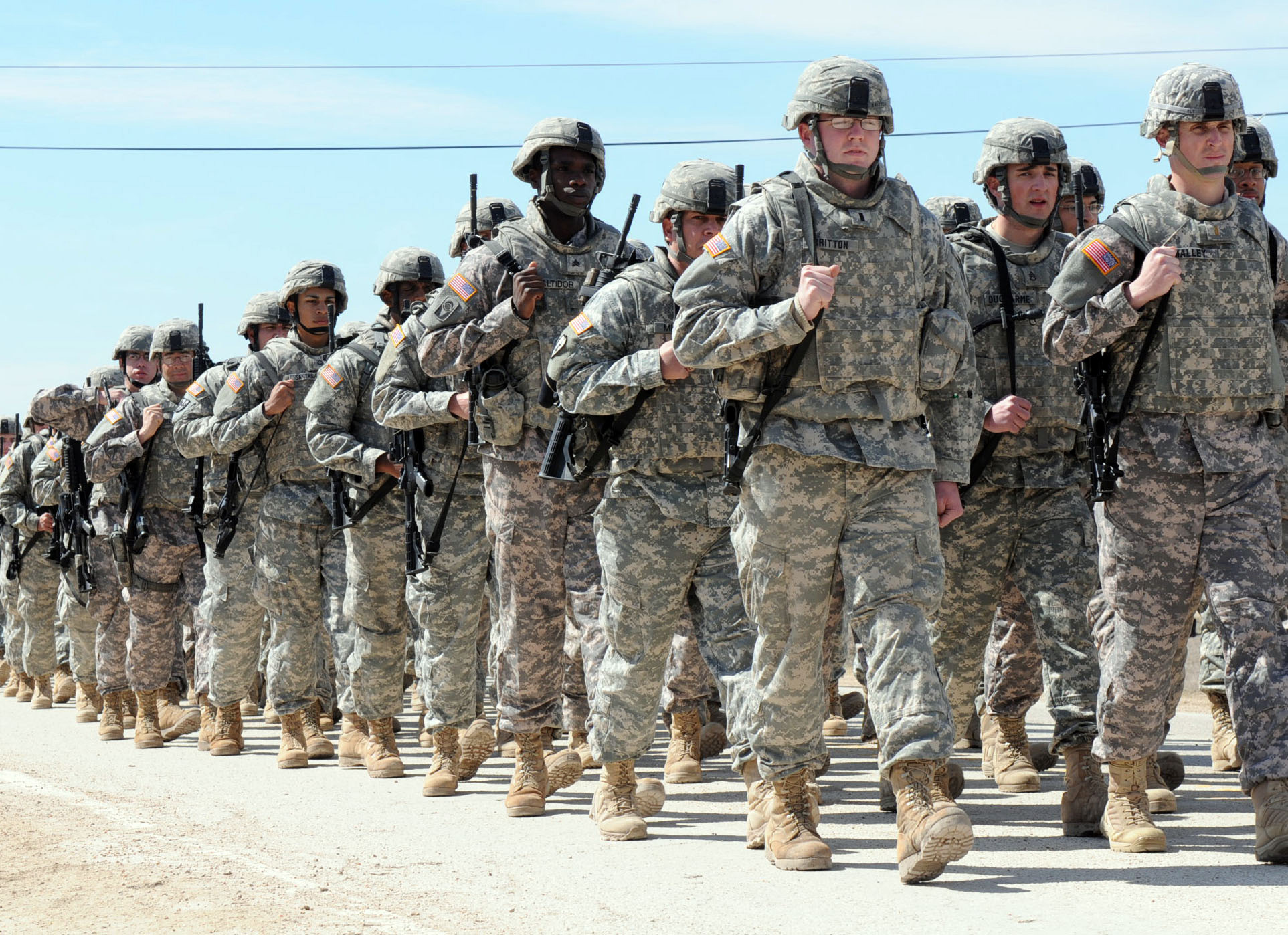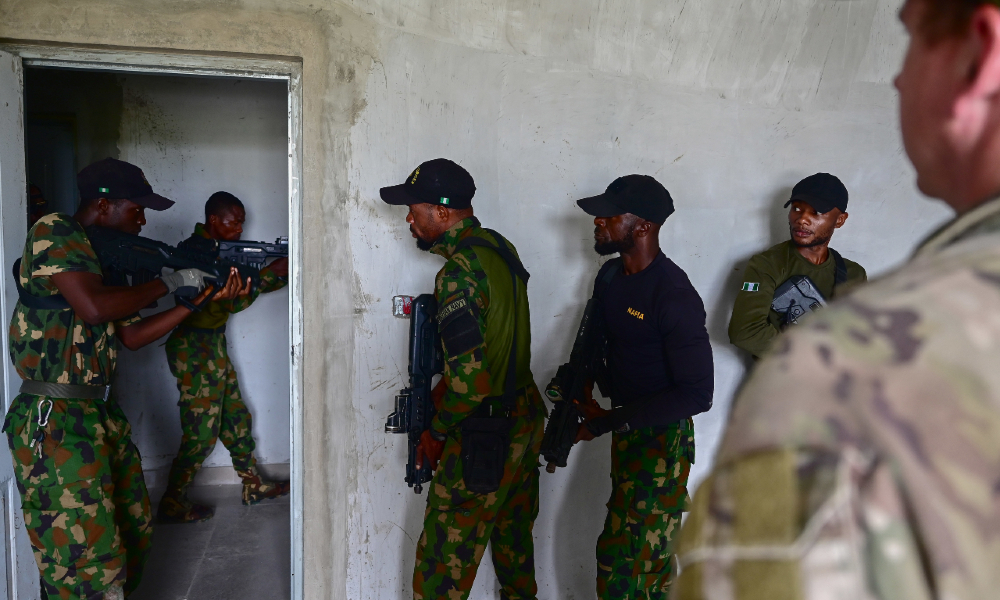The Military Is Making Progress in Its Counter-Extremism Efforts, but Gaps Remain
There is a growing problem of extremism in the U.S. military.

Published by The Lawfare Institute
in Cooperation With

The Department of Defense released its Report on Countering Extremist Activity Within the Department of Defense in December 2021. The report is the product of a months-long effort by the Countering Extremist Activity Working Group (CEAWG), which was commissioned last April in the wake of a department-wide stand down following the Jan. 6 siege at the Capitol.
The report is timely. Recent data released by START at the University of Maryland, the Program on Extremism at George Washington University, the Center for Strategic & International Studies, the Department of Defense, Military Times and other organizations provide multiple metrics that show a relatively small but growing problem of extremism in the military. To be sure, the vast majority of service members and veterans vehemently condemn extremist behavior and ideology. But despite a number of significant and positive advancements reflected in the report, gaps remain in the broader effort within the military to fully tackle this problem.
Progress
The report acknowledges many positives. First, it provides important updates to the Defense Department instruction on protest, extremist and criminal gang activities for its members. Two major updates include more stringent language both for what constitutes “active participation” on social media platforms and other online domains, as well as clearer language prohibiting involvement in “meetings or activities” akin to the Jan. 6 riot.
The report also outlines new training and policies focused on key junctures in service members’ cycles, such as recruitment and separation. On the recruitment side, Defense Department entities like recruiting commands are now able to access the FBI’s Law Enforcement Enterprise Portal (LEEP), which houses a plethora of information on extremist groups, ideologies, and iconography, among other things. More recently, the Defense Department inspector general’s office announced an audit of the military’s abilities to screen applicants for supremacist, extremist and criminal gang behavior.
On the separation side, the working group is currently establishing an online training that specifically addresses efforts by violent extremist groups to recruit service members during and after transition.
The working group also outlined recommendations for more regular training and education for Defense Department personnel, including those advancing to or holding leadership positions at all levels. It also specified new training related to the department’s Insider Threat Program (InT).
That last bit is important, because InT is one of the key pillars for implementing the Defense Department’s broader counter-extremism efforts. The working group has tapped InT to receive funding for a number of expanded responsibilities. These include centralized resources like a behavioral analysis center, a case management and analysis system, and an anonymous force-wide hotline. The working group also recommended a review of the efficacy of current extremism reporting and response mechanisms. All told, these amount to an ambitious set of expansions that empowers InT and forces it to look closely at current efforts.
Perhaps most importantly, expanding InT’s resources and responsibilities will take some of the weight off of team commanders to monitor, identify and report extremist activity within their teams. Pentagon spokesperson John Kirby admitted that commanders “will have to make that call on their own in terms of what they believe is the right thing to do.” While commanders do benefit from deep knowledge and the respect of their teams, even with excellent training resources they may struggle to make determinations.
Currently, the Defense Department does not generate a list of banned domestic extremist groups like the Proud Boys or the Oath Keepers that might support commanders. Such a list would have serious privacy and civil liberties implications, but it would eliminate any gray areas when it comes to reporting extremist involvement. Commanders are also burdened with other responsibilities, and no amount of training can replace the experience of behavioral scientists and threat assessors who will likely staff InT’s new center. Leaning too heavily on commanders to counter extremism may also result in significant conflicts of interest, which—even with bolstered reporting and response mechanisms through InT—could prove costly.
Recent events have hammered home the potential risks in relying too heavily on commanders. West Point professor Daniel Milton and I found last year that the majority of Jan. 6 rioters who had military experience held some level of officer status while serving. As the investigation and prosecution have progressed, that number has dropped slightly and fluctuated between 30 and 40 percent for the past few months. While this high percentage might be alarming at first look, it is slightly lower than the portion of the current total force who hold commissioned or noncommissioned officer roles. It is also important to remember that the Jan. 6 siege is just one snapshot, not a representative sample, of the broader issue of extremism in the military.
What’s more, several military Jan. 6 arrestees who were serving during the riot held officer status, including a captain in the Army Reserve, an active-duty major in the Marines, and a sergeant in the Army Reserve who was also an avowed white supremacist and Nazi sympathizer. Beyond Jan. 6, stories have also surfaced of other officers, including a lieutenant colonel in the Army Reserve, who have been investigated, relieved of command, and/or removed from the force for extremism-related issues. Military officers may not be more susceptible to extremist views and involvement than their enlisted counterparts, but they are certainly not immune. And for officers who do espouse extremist views, there is the added risk of creating permissive or even enabling environments for others under their chain of command to do the same.
In the initial days following the Jan. 6 riot, multiple outlets reported that the proportion of charged rioters who had military experience was significantly higher compared to the proportion of the general U.S. population. The Jan. 6 proportion has since dropped substantially, and as we pointed out last April this statistic tends to be misleading or misrepresented. But beyond Jan. 6, other research organizations have tracked a significant rise in recent years of extremist activity involving service members and veterans.
START at the University of Maryland has tracked a surge in extremist-related crimes perpetrated by individuals with military background since 2010 compared to the 1990s and 2000s, even excluding the large number of Jan. 6 rioters. Surveys conducted by the Military Times have also traced a steady rise in signs of extremism among active-duty troops over the past few years. What’s more, while a Defense Department inspector general report outlined only around 270 allegations of extremism-related activity among service members in 2021 (of which the vast majority were investigated internally at the department), that is 10 times the total number of cases reported from 2013 to 2018 across the military. This may be the result of increased attention within the Defense Department over the past year, but it nonetheless reflects a significant change. If these data are any indication, the number of cases is likely to rise going forward given current trends, expanded definitions for prohibited activities, and improved reporting mechanisms, all outlined above.
In short, the military is making significant strides in its efforts to counter extremism among its own, but it will continue to face extra scrutiny from the public as it grapples with the problem. If the military is to invigorate its efforts, then it needs to address two strategic gaps in the current approach.
Gaps Remaining
The first gap has to do with when counter-extremism policies kick in. For the most part, the changes underway at the Defense Department tend to fall in the realm of secondary prevention, or practices that aim to detect and reduce the impact of extremist activity once it has occurred. Boosting InT’s reporting and response mechanisms is a good example. It strengthens the department’s ability to identify instances of extremist activity and respond appropriately, but only once that activity has transpired.
However, there is an entire class of primary prevention practices that remain largely untapped. These are tools like media literacy and civic education that aim to prevent extremist activity before it occurs. A growing body of empirical evidence from research centers such as New America and American University’s PERIL supports the use of these approaches. A good example is training tools tailored specifically for service members to help them identify and build resilience against the mis-/dis-/mal-information that feeds extremist movements and organizations.
Primary prevention practices like these would force the Defense Department to take harder stances on specific extremist movements, ideologies, and organizations; move upstream from training that focuses on explaining rules and resources for what to do once something has already happened; and use service members’ strengths to help them build underlying resilience. These practices could fall within InT’s responsibilities or be the focus of a new office or center that supports InT.
The second gap concerns who these policies reach: Right now, it’s almost exclusively current service members. The Defense Department will likely face some challenges with implementation across the military and may even encounter some resistance from reserve and National Guard components. That kind of resistance is particularly concerning when, for example, the National Guard is called on to address domestic disturbances. These are problems that the department must address transparently, but as others noted last year, this isn’t just Defense’s problem to solve.
Veterans make up the vast majority (more than 90 percent) of federally charged Jan. 6 rioters with military experience, many of whom had been separated for more than a decade prior to the riot. According to another START study, 84 percent of the 458 U.S. extremists with some military experience over the past three decades were no longer serving when they were arrested for extremist crimes. While the vast majority of veterans do not engage in extremist activities and abhor the conduct of those who do, it is clear that any effort to fully address extremism in the military cannot ignore veterans.
Unfortunately, the Defense Department is largely limited in how its policies can reach this population and has mostly punted this issue to the Department of Veterans Affairs and veterans support organizations (VSOs). Thankfully, there are encouraging signs from the veteran community. A recent event hosted by Brookings brought together leaders from Veterans Affairs, VSOs, and the research community to address extremism among veterans. That event featured representatives from organizations like We the Veterans, which focuses on using veterans’ strengths to counter the pull of extremist ideologies and movements and to strengthen the underlying pillars of American democracy.
There’s also growing interest in Congress to support these lines of effort within the veteran community. The House Committee on Veterans’ Affairs continues to engage the private sector, research community, VSOs, and other sectors on how it can empower counter-extremism efforts. Multiple members of Congress have also introduced legislation to this effect, much of which remains to be signed into law. But these efforts would benefit from incorporating the primary prevention practices outlined above.
Today, the U.S. faces an extremist threat that is increasingly mainstream and harder to counter with traditional prevention tools. The federal government is already undergoing a sea change in its own approach, and the military has shown that it isn’t shying away from the problem either.
Some of the greatest advancements in the nation’s history have been the result of innovation from the military. The Defense Department and the veteran community have a unique combination of culture and legitimacy to lead when it comes to countering extremism, too. With support from government, policy, research, and other sectors, it is this ethos that should drive efforts going forward.





